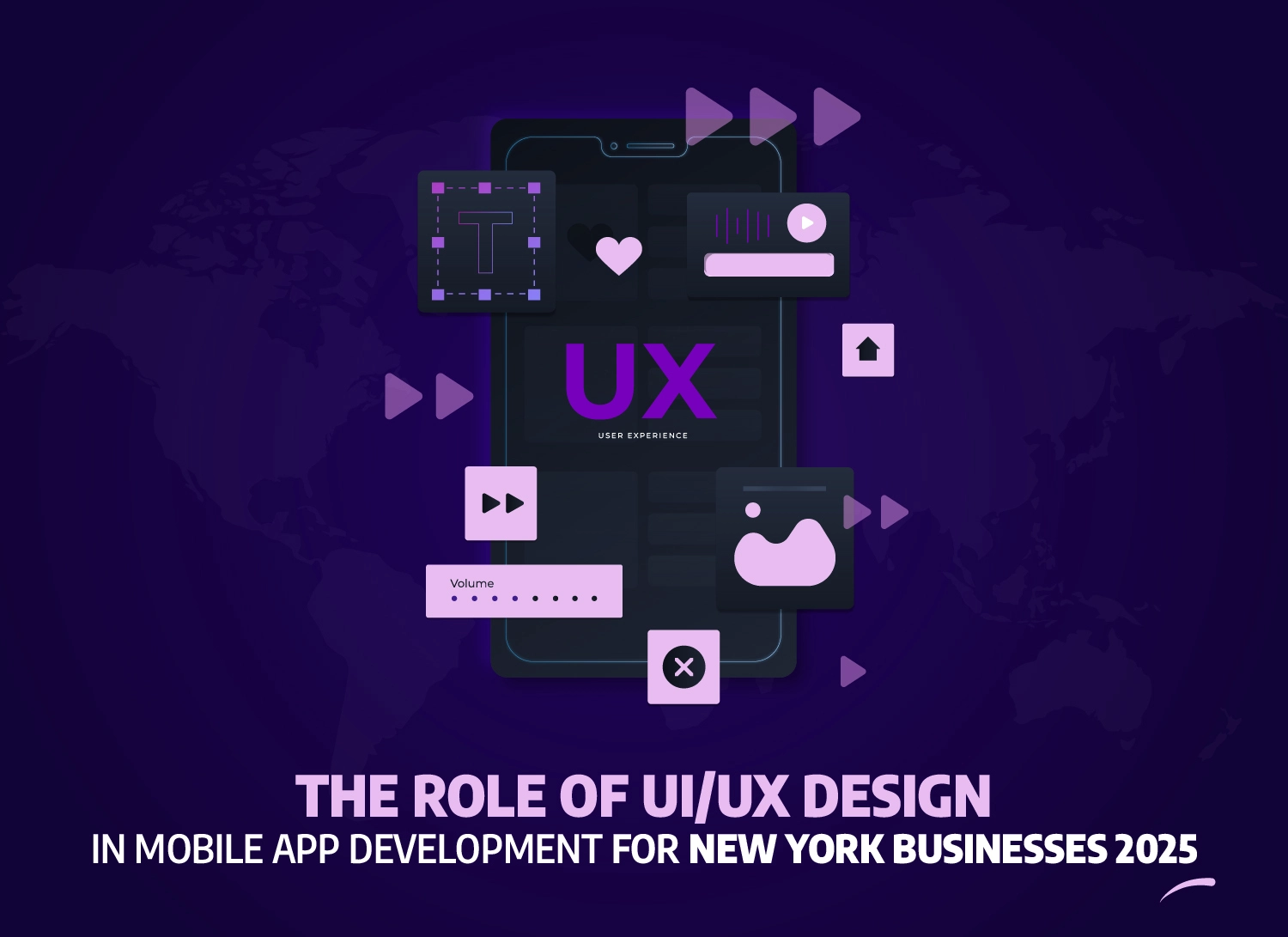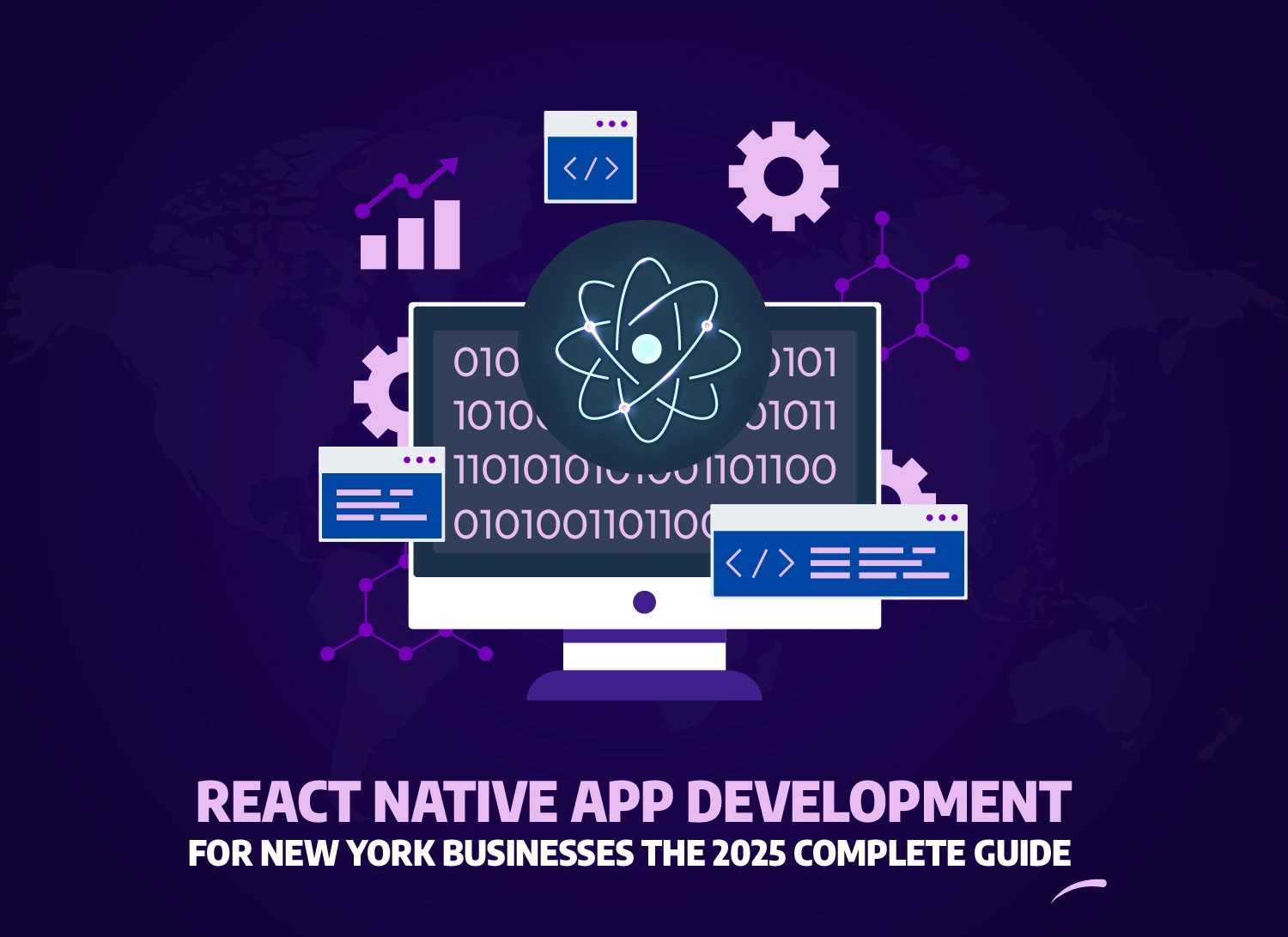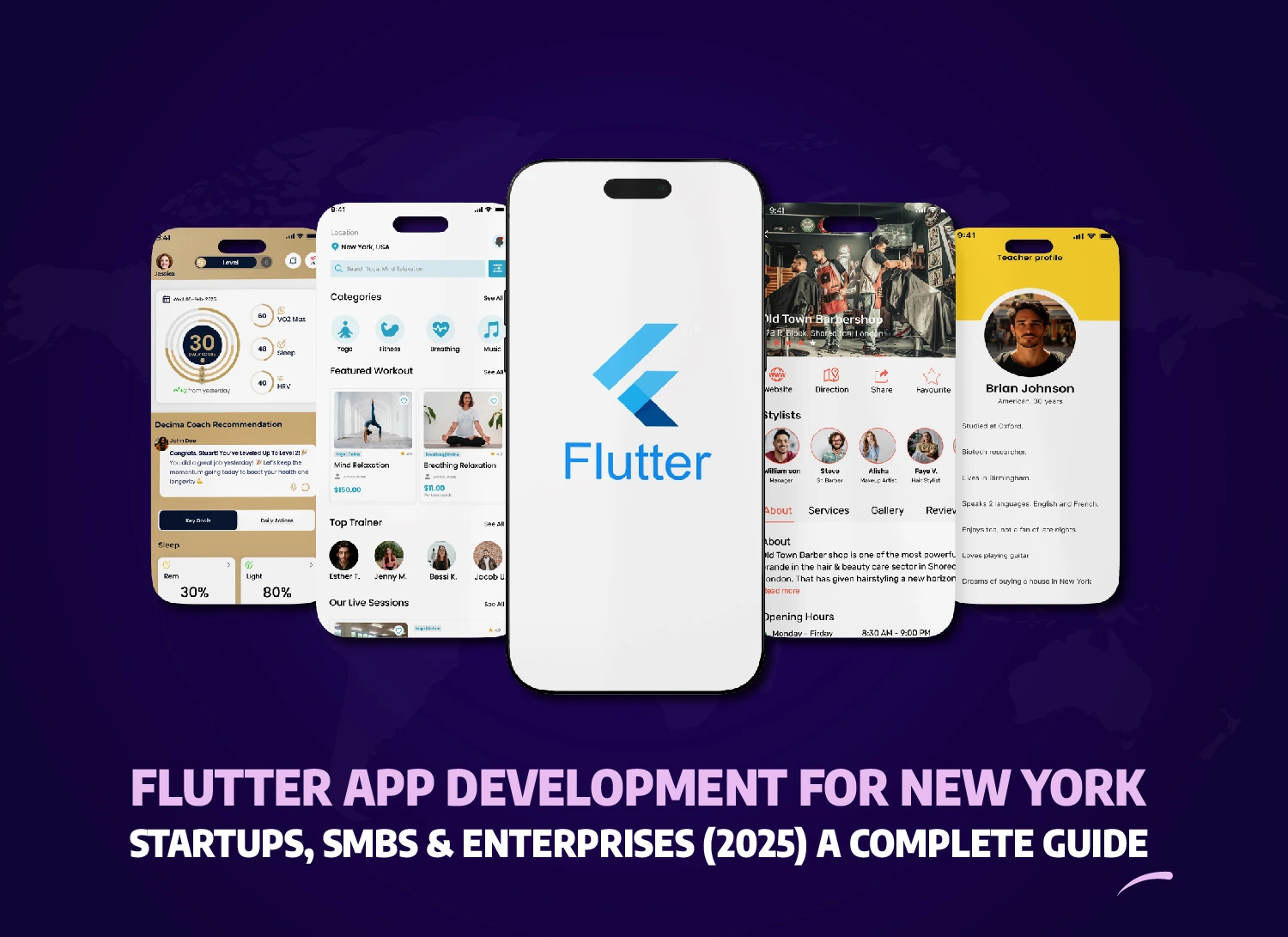- Introduction
- Understanding Native vs Hybrid App Development Fundamentals
- The Wrong Development Approach Could Cost You Big!
- Development Cost Analysis and Budget Considerations in New York
- Performance and User Experience Comparison
- Development Speed and Time to Market Analysis
- Regional Market Trends and New York Tech Landscape
- Technology Stack and Framework Selection
- App Store Deployment and Maintenance Strategies
- Industry-Specific Applications and Use Cases
- Future Trends and 2025 Predictions
- Making the Right Choice for Your New York Business
- At a Glance: Key Takeaways
- Stop Wasting Time and Money on the Wrong Development Approach!
- Frequently Asked Questions
- What is the cost difference between native vs hybrid app development in New York?
- How long does mobile app development take for native vs hybrid approaches?
- Which performs better: native vs hybrid mobile app development?
- Can hybrid apps access all device features like native apps?
- What are the best frameworks for hybrid app development in 2025?
- How do maintenance costs compare between native and hybrid apps?
- Conclusion: Take the Next Step
Share This Article

Introduction
Are you a New York business owner struggling to decide between native vs hybrid app development for your 2025 mobile strategy? With the mobile app market expected to reach $407.31 billion by 2026, choosing the right development approach can make or break your digital success. This comprehensive guide explores native vs hybrid app development in New York, helping you make an informed decision that aligns with your business objectives and budget.
This blog explores native vs hybrid app development options for New York businesses in 2025, providing practical insights on costs, performance, and regional market considerations to guide your mobile app strategy.
Understanding Native vs Hybrid App Development Fundamentals
Native app development uses platform-specific programming languages (Swift for iOS, Kotlin for Android), while hybrid app development employs cross-platform frameworks to create applications that run on multiple operating systems from a single code base.
Understanding the fundamental differences between native and hybrid development approaches is crucial for making informed decisions about your mobile strategy. These development methodologies offer distinct advantages and trade-offs that directly impact performance, cost, and user experience.
What is Native App Development?
Native development solutions involve creating applications specifically for one operating system using core development languages. iOS app development utilizes Swift or Objective-C, while Android app development employs Kotlin or Java. Native applications leverage platform-specific features and provide superior performance through direct access to device features.
Native apps offer seamless integration with operating system APIs, enabling developers to utilize advanced features like biometric authentication, camera controls, and device sensors. This direct platform access results in optimized performance and responsive user interfaces that feel natural to platform users.
What is Hybrid App Development?
Hybrid mobile app development combines web technologies with native components, allowing developers to write code once and deploy across multiple platforms. Popular frameworks like React Native and Flutter enable faster development cycles by sharing code between iOS and Android platforms.
Modern hybrid frameworks have evolved significantly, offering near-native performance for many application types. These solutions reduce development time and costs while maintaining compatibility across multiple platforms, making them attractive for businesses seeking broader market reach.
The Wrong Development Approach Could Cost You Big!
Let’s Talk
Is your app development strategy setting you up for failure? Click here to make the right decision today!
Cross-Platform App Development vs Traditional Approaches
Cross-platform applications offer businesses the advantage of reaching both Android and iOS users simultaneously, though with some trade-offs in performance-critical applications. According to Statista’s 2024 Developer Survey, 42% of developers now use cross-platform frameworks for mobile development.
| Development Approach | Code Reusability | Performance Level | Development Time |
|---|---|---|---|
| Native Development | Platform-specific | Excellent | Longer per platform |
| Hybrid Development | 80-90% | Good to excellent | 30-50% faster |
| Cross-Platform | 95% | Good | Fastest |
Development Cost Analysis and Budget Considerations in New York
Native vs hybrid app development cost in New York varies significantly – native apps typically cost 40-60% more upfront due to platform-specific development, while hybrid approaches reduce initial investment but may increase maintenance costs.
Understanding the financial implications of development choices is essential for New York businesses planning their mobile strategy. Cost considerations extend beyond initial development to include maintenance, updates, and long-term scalability requirements.
Native App Development Costs
Native development requires separate teams and codebases for each platform, significantly impacting project budgets. In New York’s competitive market, native app development typically ranges from $100,000 to $300,000 for comprehensive solutions across both platforms.
- Initial development: $50,000-$150,000 per platform
- Dedicated development teams for iOS and Android
- Higher developer rates in New York ($120-$200/hour)
- Ongoing maintenance for multiple codebases
Hybrid App Development Investment
Hybrid development offers cost advantages through shared codebases and streamlined development processes. New York businesses can expect 30-50% cost savings compared to native development, with projects ranging from $60,000 to $180,000 for complete solutions.
- Single codebase reduces initial costs by 30-50%
- Cross-platform frameworks lower development time
- Shared development resources across platforms
- Potential higher costs for performance optimization
Total Cost of Ownership Comparison
Long-term costs include app store fees, regular updates, security patches, and feature enhancements. According to Clutch’s 2024 Mobile App Cost Report, maintenance typically costs 15-20% of initial development annually.
| Cost Factor | Native Development | Hybrid Development |
|---|---|---|
| Initial Development | $100,000-$300,000 | $60,000-$180,000 |
| Annual Maintenance | $20,000-$60,000 | $15,000-$40,000 |
| Feature Updates | Higher (dual platform) | Lower (shared codebase) |
Performance and User Experience Comparison
Native applications deliver superior performance with smooth animations and instant access to device features, while high-performance hybrid app development has significantly improved but still faces limitations in graphical applications and animation-intensive apps.
Performance directly impacts user engagement and retention rates. New York’s competitive digital landscape demands exceptional user experiences, making performance considerations critical for app success.
Native App Performance Advantages
Native development provides direct access to platform APIs and hardware capabilities, resulting in optimal performance metrics. Gartner’s 2024 Mobile Performance Study shows native apps perform 20-30% faster than hybrid alternatives in CPU-intensive tasks.
- Superior performance through direct operating system integration
- Native user interfaces provide seamless user experience
- Full hardware access and device-specific features
- Optimal performance for game development and animation applications
Hybrid App Performance Considerations
Modern hybrid frameworks have significantly narrowed the performance gap with native solutions. React Native and Flutter deliver near-native performance for most business applications, though limitations remain in graphics-intensive scenarios.
- Performance improvements in modern frameworks
- Near-native experience for standard business applications
- Limitations in graphics-intensive and gaming applications
- Dependency on framework updates for performance optimization
User Experience Quality Factors
User experience encompasses more than raw performance, including interface consistency, animation smoothness, and platform-specific behaviors. Both approaches can deliver excellent user experiences when properly implemented and optimized.
| Performance Metric | Native Apps | Hybrid Apps |
|---|---|---|
| App Launch Time | 1-2 seconds | 2-3 seconds |
| Animation Smoothness | 60 FPS consistently | 45-60 FPS |
| Memory Usage | Optimized | Moderate overhead |
| Battery Consumption | Lower | Slightly higher |
Development Speed and Time to Market Analysis
Hybrid mobile app development typically reduces development time by 30-50% through single codebase architecture, while native development requires parallel development teams but offers faster individual platform optimization.
Time to market can determine competitive advantage in New York’s fast-paced business environment. Development speed considerations must balance rapid deployment with quality and long-term maintainability.
Hybrid Development Speed Advantages
Single codebase development significantly accelerates project timelines, allowing businesses to launch across multiple platforms simultaneously. Most hybrid projects complete in 3-6 months compared to 6-12 months for dual-platform native development.
- Faster development time through code reusability
- Single development team manages cross-platform deployment
- Rapid prototyping with pre-built components
- Simultaneous testing across platforms
Native Development Timeline Considerations
While native development requires longer timelines, parallel development teams can work simultaneously on both platforms. This approach may extend initial development but provides optimized results and easier long-term maintenance.
- Platform-specific development requires dedicated resources
- Parallel development possible with adequate team structure
- Longer initial development but optimized performance
- Thorough testing required for each platform
Business Priorities and Development Speed
Balancing speed with quality requires understanding your specific business objectives and market conditions. Startups often prioritize rapid market entry, while established enterprises may focus on long-term performance and user retention.
| Business Type | Preferred Approach | Timeline Priority | Quality Focus |
|---|---|---|---|
| Startup/MVP | Hybrid | 3-6 months | Market validation |
| Enterprise | Native | 6-12 months | Performance optimization |
| E-commerce | Mixed | 4-8 months | User experience |
Regional Market Trends and New York Tech Landscape
New York’s competitive tech market favors both approaches depending on industry – fintech and healthcare typically choose native for security and performance, while startups often select hybrid for faster market entry and broader reach.
New York’s diverse business ecosystem creates unique demands for mobile applications. Understanding regional preferences and industry-specific requirements helps guide development approach decisions.
New York Tech Industry Preferences
The city’s mature technology infrastructure supports both development approaches effectively. New York hosts over 9,000 tech companies, creating a robust ecosystem for mobile app development talent and resources.
Local businesses benefit from access to skilled developers experienced in both native programming languages and cross-platform frameworks. This talent diversity enables companies to choose development approaches based on project requirements rather than resource limitations.
Industry-Specific Trends in New York
Different industries in New York show distinct preferences based on regulatory requirements, performance needs, and user expectations. Fintech companies prioritize security and performance, while e-commerce businesses focus on rapid deployment and broad market reach.
- Financial Services: Prefer native applications for security and regulatory compliance
- Healthcare: Choose native for HIPAA compliance and data protection
- Retail/E-commerce: Hybrid approaches popular for multi-platform presence
- Media & Entertainment: Mixed approaches based on content complexity
Comparison of Regional Development Preferences
| Industry Sector | Preferred Approach | Key Drivers | Market Share |
|---|---|---|---|
| Financial Services | Native Development | Security, Compliance | 65% |
| Startups | Hybrid Development | Cost, Speed | 58% |
| Healthcare | Native Development | Compliance, Performance | 72% |
| E-commerce | Mixed Approach | Reach, Features | 45% each |
Technology Stack and Framework Selection
Native development uses Swift/Objective-C for iOS and Kotlin/Java for Android, while hybrid development leverages cross-platform frameworks like React Native, Flutter, and Ionic for single codebase solutions.
Technology stack selection directly impacts development efficiency, performance, and long-term maintainability. Understanding available frameworks helps businesses make informed decisions about their development approach.
Native Development Technology Stack
Native development provides complete control over platform-specific capabilities and performance optimization. iOS development utilizes Xcode with Swift or Objective-C, while Android development employs Android Studio with Kotlin or Java.
- iOS: Swift, Objective-C, Xcode development environment
- Android: Kotlin, Java, Android Studio
- Native components: Platform-specific libraries and APIs
- Development control: Complete access to platform capabilities
Popular Cross-Platform Frameworks
Modern hybrid frameworks offer robust solutions for cross-platform development. According to Stack Overflow’s 2024 Developer Survey, React Native leads with 35% adoption, followed by Flutter at 28%.
- React Native: JavaScript-based with native component rendering
- Flutter: Dart programming language with custom UI toolkit
- Ionic: HTML5-based with extensive library support
- Xamarin: C# development for multiple platforms
Framework Selection Criteria
Choosing the right framework requires evaluating multiple factors including team expertise, project requirements, and long-term maintenance considerations. Performance requirements and integration needs significantly influence framework suitability.
| Framework | Language | Performance | Learning Curve | Community Support |
|---|---|---|---|---|
| React Native | JavaScript | Good | Moderate | Excellent |
| Flutter | Dart | Excellent | Moderate | Strong |
| Ionic | HTML/CSS/JS | Moderate | Low | Good |
| Native | Swift/Kotlin | Excellent | High | Excellent |
App Store Deployment and Maintenance Strategies
Hybrid apps require single codebase management with dual platform submission, while native apps need platform-specific maintenance, though both must comply with app store guidelines and handle regular updates.
Deployment and maintenance strategies significantly impact long-term project success and operational costs. Understanding app store requirements and maintenance workflows helps plan sustainable development approaches.
App Store Submission Process
App store submission requires compliance with platform-specific guidelines and review processes. Apple’s App Store review typically takes 24-48 hours, while Google Play reviews complete within hours to days.
- Single codebase simplifies hybrid app updates
- Native apps require individual platform submissions
- App store guidelines must be followed regardless of development approach
- Review processes vary between platforms
Ongoing Maintenance Requirements
Regular maintenance ensures app functionality, security, and compatibility with operating system updates. Maintenance typically costs 15-20% of initial development annually, varying based on complexity and feature requirements.
- Framework updates for hybrid applications
- Operating system compatibility maintenance
- Security patches and performance optimizations
- Feature updates and user feedback integration
Update Management Strategies
Effective update management balances user experience improvements with development resources. Planning regular release cycles and prioritizing critical updates ensures sustained app performance and user satisfaction.
| Update Type | Native Apps | Hybrid Apps | Frequency |
|---|---|---|---|
| Security Patches | Platform-specific | Cross-platform | As needed |
| Feature Updates | Dual development | Single codebase | Quarterly |
| OS Compatibility | Platform-optimized | Framework-dependent | Bi-annually |
| Bug Fixes | Platform-specific | Shared fixes | Monthly |
Industry-Specific Applications and Use Cases
New York businesses choose native development for performance-critical applications like banking and gaming, while hybrid approaches work well for content-driven apps, e-commerce platforms, and business productivity tools.
Different industries have distinct requirements that influence development approach selection. Understanding sector-specific needs helps businesses align technology choices with operational requirements and user expectations.
Performance-Critical Applications
Financial services applications demand exceptional security, performance, and regulatory compliance. Native development provides the control and optimization necessary for banking apps, trading platforms, and payment processing systems.
- Advanced security features and biometric authentication
- Real-time transaction processing capabilities
- Regulatory compliance and data protection
- Complex user interface requirements
Content and E-commerce Applications
E-commerce businesses often benefit from hybrid development’s cost efficiency and rapid deployment capabilities. Content management, product catalogs, and standard shopping functionality work well with modern hybrid frameworks.
- Cost-effective multi-platform presence
- Rapid content updates and dynamic displays
- Integration with web-based content management systems
- Broader market reach with consistent branding
Enterprise and Productivity Apps
Business productivity applications require careful consideration of integration requirements, security needs, and scalability. Both native and hybrid approaches can succeed depending on specific organizational requirements and existing technology infrastructure.
| Industry | Common Requirements | Recommended Approach | Key Considerations |
|---|---|---|---|
| Healthcare | HIPAA compliance, security | Native | Data protection, performance |
| Education | Content delivery, accessibility | Hybrid | Cost efficiency, reach |
| Real Estate | Maps, media, search | Mixed | Features vs. budget |
| Automotive | IoT integration, performance | Native | Hardware connectivity |
Future Trends and 2025 Predictions
Native vs hybrid app development in New York 2025 will be influenced by 5G adoption, AI integration requirements, and improved cross-platform frameworks that narrow the performance gap between approaches.
Emerging technologies and market trends continue reshaping mobile development approaches. Understanding future directions helps businesses make strategic decisions that remain relevant as technology evolves.
Technology Evolution Impact
Technological advances are reducing traditional limitations of hybrid development while enhancing native capabilities. 5G networks, AI integration, and edge computing create new opportunities for both development approaches.
- 5G Networks: Enhanced connectivity reduces hybrid app performance limitations
- AI Integration: Machine learning capabilities affecting framework selection
- Cloud Integration: Improved offline functionality for hybrid applications
- Edge Computing: New opportunities for both development approaches
Market Trends Affecting Development Choices
Business agility and user expectations drive development approach decisions. Companies increasingly prioritize rapid feature deployment and seamless user experiences across all platforms and devices.
- Increasing demand for seamless cross-platform experiences
- Growing expertise in modern hybrid frameworks
- Pressure for faster feature deployment and updates
- Cost optimization requirements across industries
Emerging Framework Capabilities
Cross-platform frameworks continue improving performance and native feature access. Flutter’s continued development and React Native’s architecture improvements are closing the gap with native performance for most application types.
| Trend | Impact on Native | Impact on Hybrid | Timeline |
|---|---|---|---|
| AI Integration | Enhanced capabilities | Framework-dependent | 2024-2025 |
| 5G Adoption | Marginal improvement | Significant boost | 2025-2026 |
| Framework Evolution | Increased competition | Performance parity | Ongoing |
| WebAssembly | Limited impact | Performance gains | 2025-2027 |
Making the Right Choice for Your New York Business
Choose native app development when performance is critical and budget allows; select hybrid development for cost efficiency, faster time to market, and standard functionality requirements with cross-platform deployment needs.
Making the optimal development approach decision requires careful evaluation of business objectives, technical requirements, and resource constraints. A systematic assessment framework helps ensure alignment between technology choices and strategic goals.
Decision Criteria Framework
Successful development approach selection balances multiple factors including performance requirements, budget constraints, timeline expectations, and long-term strategic objectives. Consider both immediate needs and future scalability requirements.
Business Requirements Assessment
- Performance needs and user experience expectations
- Budget constraints and development timeline
- Target audience and platform preferences
- Integration requirements with existing systems
Technical Considerations
- App complexity and advanced feature requirements
- Offline functionality and data synchronization needs
- Device feature utilization requirements
- Security and regulatory compliance standards
When to Choose Native Development
Native development excels in scenarios requiring maximum performance, extensive platform integration, or strict security requirements. Industries like healthcare, fintech, and gaming typically benefit from native approaches despite higher costs.
- Performance is critical to user experience success
- Extensive device feature integration required
- Stringent security and compliance requirements
- Long-term app evolution and optimization planned
- Budget allows for platform-specific development
When to Choose Hybrid Development
Hybrid development suits businesses prioritizing cost efficiency, rapid market entry, or content-focused applications. Startups and companies with standard functionality requirements often achieve success with modern hybrid frameworks.
- Budget constraints require development cost optimization
- Quick time to market provides competitive advantage
- Content-focused application with standard functionality
- Cross-platform consistency important for brand experience
- Development team has strong web technology expertise
| Decision Factor | Choose Native If | Choose Hybrid If |
|---|---|---|
| Budget | $150,000+ available | $50,000-$120,000 budget |
| Timeline | 6-12 months acceptable | 3-6 months required |
| Performance | Critical for success | Standard requirements |
| Features | Advanced platform integration | Standard functionality |
At a Glance: Key Takeaways
- Cost Difference: Native development costs 40-60% more upfront but may provide better long-term ROI for complex applications
- Performance Gap: Native apps deliver 20-30% better performance, while modern hybrid frameworks achieve near-native results for standard applications
- Development Speed: Hybrid approaches reduce development time by 30-50% through code reusability and cross-platform deployment
- Industry Preferences: Financial services and healthcare favor native for security; startups and e-commerce often choose hybrid for speed and cost
- Future Trends: 5G, AI integration, and improved frameworks are narrowing the performance gap between approaches
- New York Market: Local businesses balance performance requirements with budget realities, with expert consultation crucial for optimal decisions
Stop Wasting Time and Money on the Wrong Development Approach!
Let’s Talk
Native vs hybrid – one is holding your business back. Click here and make sure you’re on the right track before it’s too late!
Frequently Asked Questions
What is the cost difference between native vs hybrid app development in New York?
Native app development typically costs 40-60% more than hybrid development in New York, with native apps ranging from $100,000-$300,000 for both platforms versus $60,000-$180,000 for hybrid solutions, though maintenance costs may vary long-term.
How long does mobile app development take for native vs hybrid approaches?
Hybrid mobile app development generally takes 30-50% less time than native development, with hybrid projects completing in 3-6 months versus 6-12 months for native apps across both iOS and Android platforms.
Which performs better: native vs hybrid mobile app development?
Native applications provide superior performance with 20-30% faster load times and smoother animations, while modern hybrid frameworks have significantly improved but still lag behind in graphics-intensive and performance-critical applications.
Can hybrid apps access all device features like native apps?
Modern hybrid app development frameworks provide access to most device features including camera, GPS, and sensors, though some advanced native features and latest OS capabilities may have delayed or limited support compared to native development.
What are the best frameworks for hybrid app development in 2025?
React Native, Flutter, and Ionic lead hybrid development frameworks in 2025, with Flutter showing strongest growth for complex applications and React Native maintaining popularity for JavaScript-experienced teams seeking native-like performance.
How do maintenance costs compare between native and hybrid apps?
Native apps typically require 15-20% of initial development cost annually for maintenance across both platforms, while hybrid apps generally cost 10-15% annually due to shared codebase efficiency, though framework updates may add complexity.
Conclusion: Take the Next Step
The choice between native vs hybrid app development in New York 2025 ultimately depends on your specific business requirements, performance needs, and strategic goals. While native development offers superior performance and complete platform integration, hybrid approaches provide cost-effective solutions with faster time to market and broader reach.
New York businesses should carefully evaluate their user experience requirements, budget constraints, and long-term app evolution plans before making this critical decision. The city’s competitive digital landscape demands high-quality mobile experiences regardless of development approach, making strategic choice and expert execution more important than following industry trends.
For personalized guidance on choosing between native and hybrid development approaches, contact New York App Devs’ experienced team who can assess your specific requirements and recommend the optimal strategy for your mobile app success. Our expertise across all development approaches ensures objective recommendations aligned with your business objectives.
As mobile technology continues evolving rapidly, the gap between native and hybrid capabilities will likely narrow, making current strategic decisions even more crucial for long-term business success in New York’s dynamic market.




